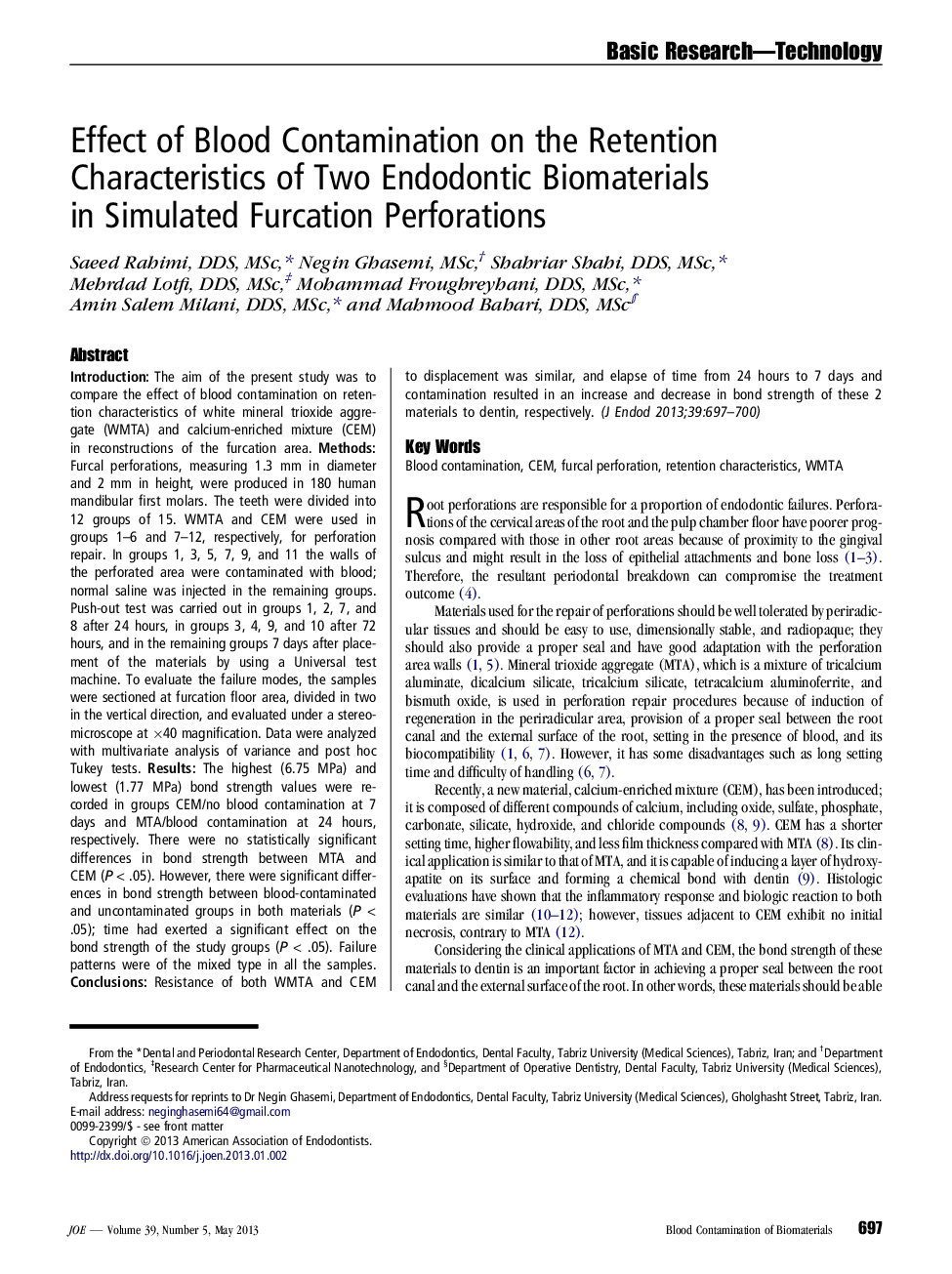| کد مقاله | کد نشریه | سال انتشار | مقاله انگلیسی | نسخه تمام متن |
|---|---|---|---|---|
| 3148226 | 1197392 | 2013 | 4 صفحه PDF | دانلود رایگان |

IntroductionThe aim of the present study was to compare the effect of blood contamination on retention characteristics of white mineral trioxide aggregate (WMTA) and calcium-enriched mixture (CEM) in reconstructions of the furcation area.MethodsFurcal perforations, measuring 1.3 mm in diameter and 2 mm in height, were produced in 180 human mandibular first molars. The teeth were divided into 12 groups of 15. WMTA and CEM were used in groups 1–6 and 7–12, respectively, for perforation repair. In groups 1, 3, 5, 7, 9, and 11 the walls of the perforated area were contaminated with blood; normal saline was injected in the remaining groups. Push-out test was carried out in groups 1, 2, 7, and 8 after 24 hours, in groups 3, 4, 9, and 10 after 72 hours, and in the remaining groups 7 days after placement of the materials by using a Universal test machine. To evaluate the failure modes, the samples were sectioned at furcation floor area, divided in two in the vertical direction, and evaluated under a stereomicroscope at ×40 magnification. Data were analyzed with multivariate analysis of variance and post hoc Tukey tests.ResultsThe highest (6.75 MPa) and lowest (1.77 MPa) bond strength values were recorded in groups CEM/no blood contamination at 7 days and MTA/blood contamination at 24 hours, respectively. There were no statistically significant differences in bond strength between MTA and CEM (P < .05). However, there were significant differences in bond strength between blood-contaminated and uncontaminated groups in both materials (P < .05); time had exerted a significant effect on the bond strength of the study groups (P < .05). Failure patterns were of the mixed type in all the samples.ConclusionsResistance of both WMTA and CEM to displacement was similar, and elapse of time from 24 hours to 7 days and contamination resulted in an increase and decrease in bond strength of these 2 materials to dentin, respectively.
Journal: Journal of Endodontics - Volume 39, Issue 5, May 2013, Pages 697–700